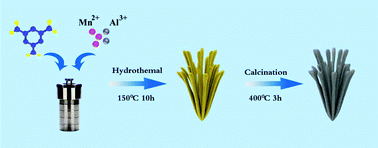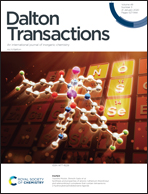Mn2O3/Al2O3 cathode material derived from a metal–organic framework with enhanced cycling performance for aqueous zinc-ion batteries†
Abstract
Rechargeable aqueous zinc-ion batteries (ZIBs) are considered to be potential candidates for large-scale energy storage due to their high capacity, low cost, high safety and environmental friendliness. A key problem encountered in Mn-based cathodes is the dissolution of Mn2+ that causes significant capacity fading. Herein, a novel Mn2O3/Al2O3 composite material with a microbundle structure was synthesized using a strategy called ‘MOFs as precursors’. Uniform distribution of Mn2O3 and Al2O3 with a precise controlled Mn/Al molar ratio can be easily realized using this method. After compositing with Al2O3, the resulting material shows not only a higher capacity but also a better cycling stability (118.0 mA h g−1 after 1100 cycles at 1500 mA g−1) than the pure Mn2O3. Combined with the ICP analysis, it can be deduced that Al2O3 can effectively inhibit the dissolution of Mn2+ from Mn3+ disproportionation. Our result can provide some inspiration for the modification of Mn-based materials and other materials used in zinc ion batteries or other battery systems.



 Please wait while we load your content...
Please wait while we load your content...